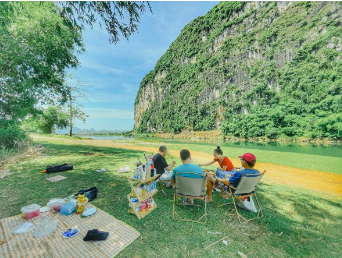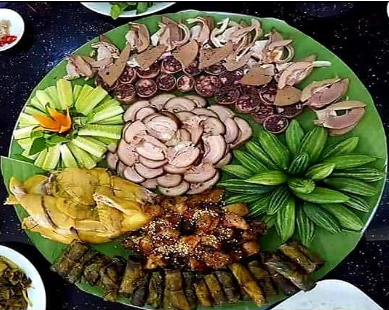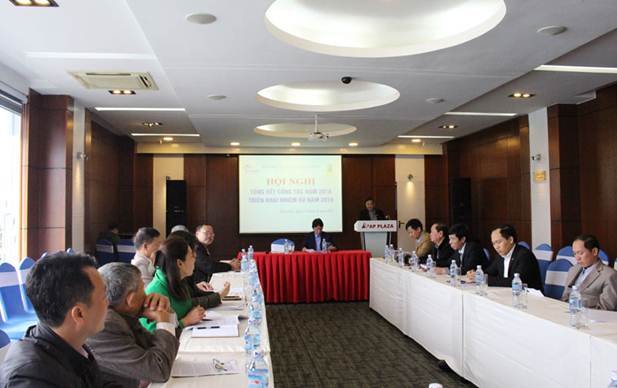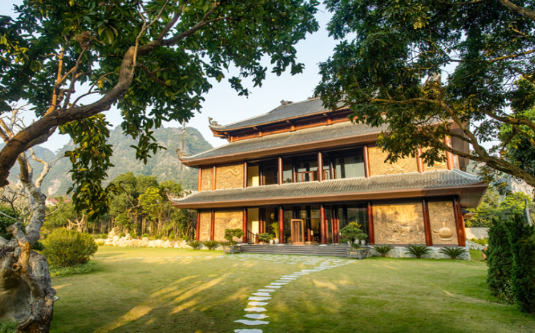X
06/12/2023 29/12/2023
961 0
From archaeological relics in Hoa Binh, many burials of ancient Muong people have been discovered with unique structures and burial methods. Inside the tombs are often buried many burial items. Burial objects found through excavations have contributed to revealing the mystery of the customs and practices of the Muong people that have been hidden for hundreds of years. Because these relics are visual evidence carrying messages from the past that truly reflect life, society as well as ancient customs and traditions in the Muong region, contributing to clarifying issues about chronology and structure and the burial ways of Muong tombs.
Brown glazed ceramics - A characteristic of Tran Dynasty ceramics
(XIII-XIV centuries)
Among the buried objects, ceramics are considered treasures that reflect many historical, cultural and social issues of the Muong people through many historical periods. Among the ceramic artifacts found in Muong tombs are Tran Dynasty ceramic artifacts.
Ceramics of this period found in ancient Muong tombs are much richer in quantity and type than Ly Dynasty ceramics, including the following ceramic lines: white glazed ceramics, celadon ceramics, brown glazed ceramics, brown floral ceramics, and blue ceramics. Due to its development and direct inheritance from Ly Dynasty ceramics, Tran Dynasty ceramics basically have the same style as Ly Dynasty ceramics in terms of shape, glaze color and decorative patterns. However, Tran ceramics have developed following a simple and popular trend with ceramics with strong shapes, generous decorative patterns and uncomplicated and sophisticated lines like Ly Dynasty ceramics.
Famous collections of artifacts with high economic value among the ceramic collections found in Muong tombs are still brown-flowered ceramics. In many Muong tombs in Luong Son, Kim Boi, Lac Son (Hoa Binh), people have dug up many precious brown-flowered ceramics. The quality of these rare ceramics partly reflects the high social status of their owners. This document contributes to clarifying the picture of the social nature of some high-end ceramics in contemporary life. The richest and most characteristic collection of brown-flowered ceramics in Muong tombs are large-sized, tubular-shaped vases or jars, decorated with elaborate and sophisticated patterns around the jars.
On the other hand, the first products of the blue and white ceramic line were also soon present in Muong land and today people have dug them up. The reason for saying this is because Vietnamese blue and white ceramics began to be produced at the end of the Tran dynasty, around the beginning or first half of the 14th century. Many tombs in Luong Son, Kim Boi, and Tan Lac areas have found many types of early blue ceramics, including many types of vases, bowls, plates, and bowls painted with chrysanthemum branches and bamboo leaves in iron brown or light blue colors. At the end of the 14th century, Muong tombs were also dug up of very high-class blue-flower pottery.
Decorative designs and patterns during the Tran Dynasty tended to be much simpler in decoration. Common decorative themes include vivid depictions of people hunting animals in the forest with strong, artistic lines, embossed decorations with lotus petals, and lotus and Mau Don flower patterns around the body. Many unique specimens are also decorated with images of birds, animals or people, bringing unique beauty and containing high art. In addition, when studying the shapes and patterns on brown-flowered ceramics of the Ly - Tran dynasties, researchers also recognized many pattern elements of decorative art on Dong Son bronzes, dating back more than 1,000 years before. The brown floral ceramic jars are shaped like a bronze jar with tangent circular patterns, geometric patterns, folded S letters or figures of people, animals appearing with thick frequency through the engravings and lively drawings, full of spontaneity that we have admired through the motifs on Dong Son bronzes. This shows that Dong Son cultural traditions are also inherited in the subconscious of Dai Viet craftsmen.
Some Tran Dynasty ceramic artifacts in ancient Muong tombs
displayed at Hoa Binh Provincial Museum
Because the Muong people did not have their own writing in the past, cultural history was mainly transmitted through word of mouth, so relying on ancient ceramic collections discovered in Muong tombs is evidence of a chain of development of the Muong people in national history. Not only that, from ceramic sources combined with ethnographic sources, we can better understand the Muong people's conception of life and the universe. Through Tran Dynasty ceramic artifacts in Muong tombs, we can see more clearly the picture of the socio-economic life of the ancient Muong people.
Currently, the Hoa Binh Provincial Museum is displaying a collection of ancient ceramics with over 250 artifacts. The display content includes two main parts: History of Muong tombs through ceramic documents and introduction of ancient ceramic collections in the Muong tombs. Through the exhibition content, it has contributed to introducing and widely propagating to the people and visitors about the unique and special collections of ceramic artifacts that carry messages from the past, truly reflecting social life as well as ancient customs and traditions in Muong country. The collection is considered a treasure, reflecting many aspects of life, culture, ancient society and cultural and economic exchanges of the Muong people through many historical periods. The exhibition attracted a lot of attention from visitors, people and students inside and outside Hoa Binh city. According to the plan, Hoa Binh Provincial Museum will be open for visitors to visit this collection of ancient ceramics from November 23, 2023 until the next display to serve a wide range of visitors.














_636886053534704917.jpg)




